BioLite BaseCharge 1500 Portable Power Station Review
This hefty but very flexible portable power station stores plenty of juice and has many ways to use it, but it is a bit limited in how much you can output at once

The Biolite BaseCharge 1500 offers a lot of charge in a small package and a good selection of ways to share it with your devices. There are limits to how much can be output at a time, though.
-
+
Very large charge capacity for the weight
-
+
Lots of outputs, including USB PD and three 110V AC
-
+
Includes wireless charging for phones
-
-
The output of 1200 Watts is lower than others
-
-
No cable storage
-
-
Not waterproof
Why you can trust T3

Are you planning a longer trip into the woods? Traveling with a group of tech-wielding, power-hungry campers? The Biolite BaseCharge 1500 might be the portable power station for you because it offers lots of power storage and many ways to share it with multiple outputs. It is also, for the power capacity it offers, pretty small and light.
It is not lightweight, though, weighing in at a hefty 26.5 lbs (just over 12Kg) and costing a hefty $1699. But it's great if you need something that can charge a laptop multiple times or run multiple 110V devices. The only downside is that, at 2000 Watts, the maximum output is slightly lower than some similar devices.
BIOLITE BASECHARGE 1500 PORTABLE POWER STATION REVIEW: PRICE & AVAILABILITY
The Biolite BaseCharge 1500 is available now, priced at $1699. A smaller 622 Watt-hour version, the BaseCharge 600 is also available, priced at $699. The optional 100 Watt solar panel costs $499 and will be available in November.
BIOLITE BASECHARGE 1500 PORTABLE POWER STATION REVIEW: FEATURES
The BaseCharge 1500 is a hefty, footstool-sized device that weighs a luggable12.1 KG ( 26.5 lb.) Two handles on the sides make it easy to pick up and carry around in a lift-with-the-knees-not-the-back way. Inside the device are lots of Lithium Ion batteries holding an impressive 1,521 Watt-hours of charge. The whole thing measures 14.4 inches wide, 12.2 inches deep, and 8.8 inches tall, about the same size as a backpack.
In terms of charge per pound, it is better than many rivals, such as the GoalZero Yeti 1500X (1,516 Watt hours in 20.7kg / 45.64lbs). However, one feature that falls behind is the maximum output: while larger portable power stations can output 2000 Watts, the BaseCharge can only manage a continual 1200 Watts.
All of the connections for this portable power station are on the front of the device, grouped below the large, clear screen that shows information about the battery, including the charge level as both a percentage and a count of hours to empty: a nice touch that makes it easier to judge the state of the battery at a glance. The display also shows the power coming into and out of the battery in Watts. That’s a useful feature if you are using solar power to charge as you can see how much juice the panels are producing at a glance and move them around for maximum production.
There are a lot of connections on the front of the BaseCharge 1500: three DC outputs, five USB ports, and three AC outputs. Each group of outputs is only active when you press the label button above the outputs, which has a status light underneath. Let’s look at each type of output in turn. On the top left is a 12V carport socket under a lift-off cover. This can supply up to 100 Watts, so anything designed to plug into the lighter socket on your car should work.
Next are two 5.5mm 12V DC power ports, each of which can handle up to 10 Amps for 120 Watts. These are designed for 12V devices like RV refrigerators and coolers.
Next are the four USB ports, two Type-A (the larger rectangular style on older devices) and two Type-C, the newer, smaller, and rounded edge style that most modern cell phones use. Each socket can deliver 5 Volts at 3 Amps for up to 15 Watts of charge.
On the top right corner is another USB port. This one is different; it uses the USB Power Delivery (PD) standard, which means it can change the output voltage, depending on what the connected device requests, up to 20V at 5 Amps. This means it can output up to 100W of charge, as much as a heavyweight power adapter for a laptop. It can charge your PD-compatible cell phone or laptop much faster than the other USB ports. So, you can leave the charger for your laptop at home: just bring along a USB-C cable, and you can charge it from the BaseCharge.
This PD port can also work as a power input: you can charge the battery inside the BaseCharge by plugging in a USB PD-compatible power source. That is the quickest way to charge the BaseCharge: when I tested it with a hefty USB power supply for a laptop that could output the full 100 Watts, I could charge the BaseCharge in about 13 hours.
There are three AC outputs, each offering a standard 3-pin power socket. These three sockets can output 1200 Watts in total or a surge of 2400 Watts.
Next to the AC outputs is the solar panel & charger input, a standard HPP connector compatible with most portable solar panels. This is also how the included 120 Watt charger connects. This input can handle up to 400 Watts of solar power from up to four portable solar panels connected in series, although that will cost you a bundle. Biolite offers a 100W solar panel for $399, so four panels will cost you about the same as the BaseCharge 1500.
The only connection not on the front of the device is the wireless charger: plonk a compatible phone on the top of the device when the display is active, and it will start charging from the built-in 10 Watt wireless charger. That’s a bit slower than some: both Samsung and Apple offer wireless chargers for their devices that can charge up to 15 Watts. Still, it’s a great feature to have available.
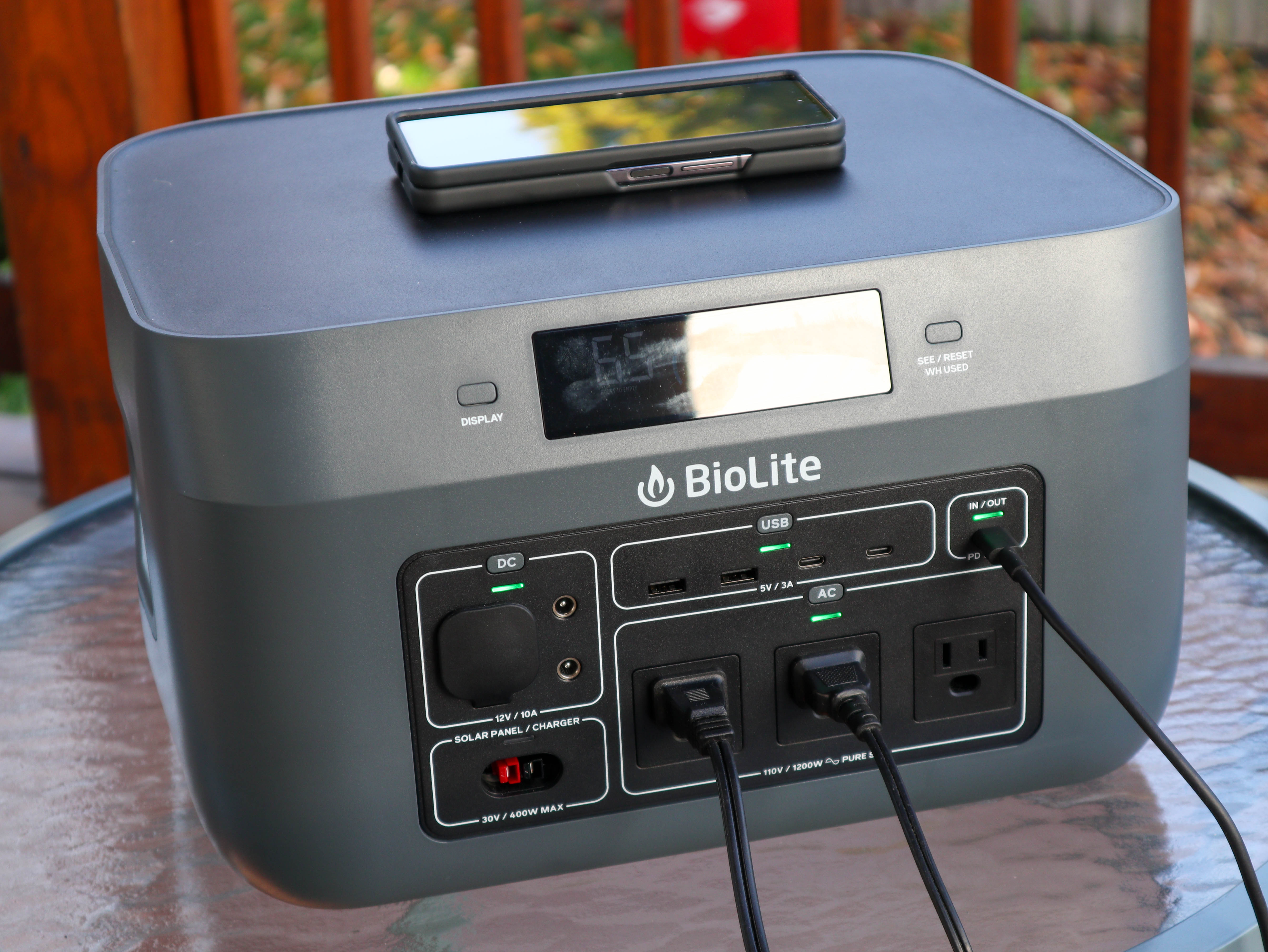
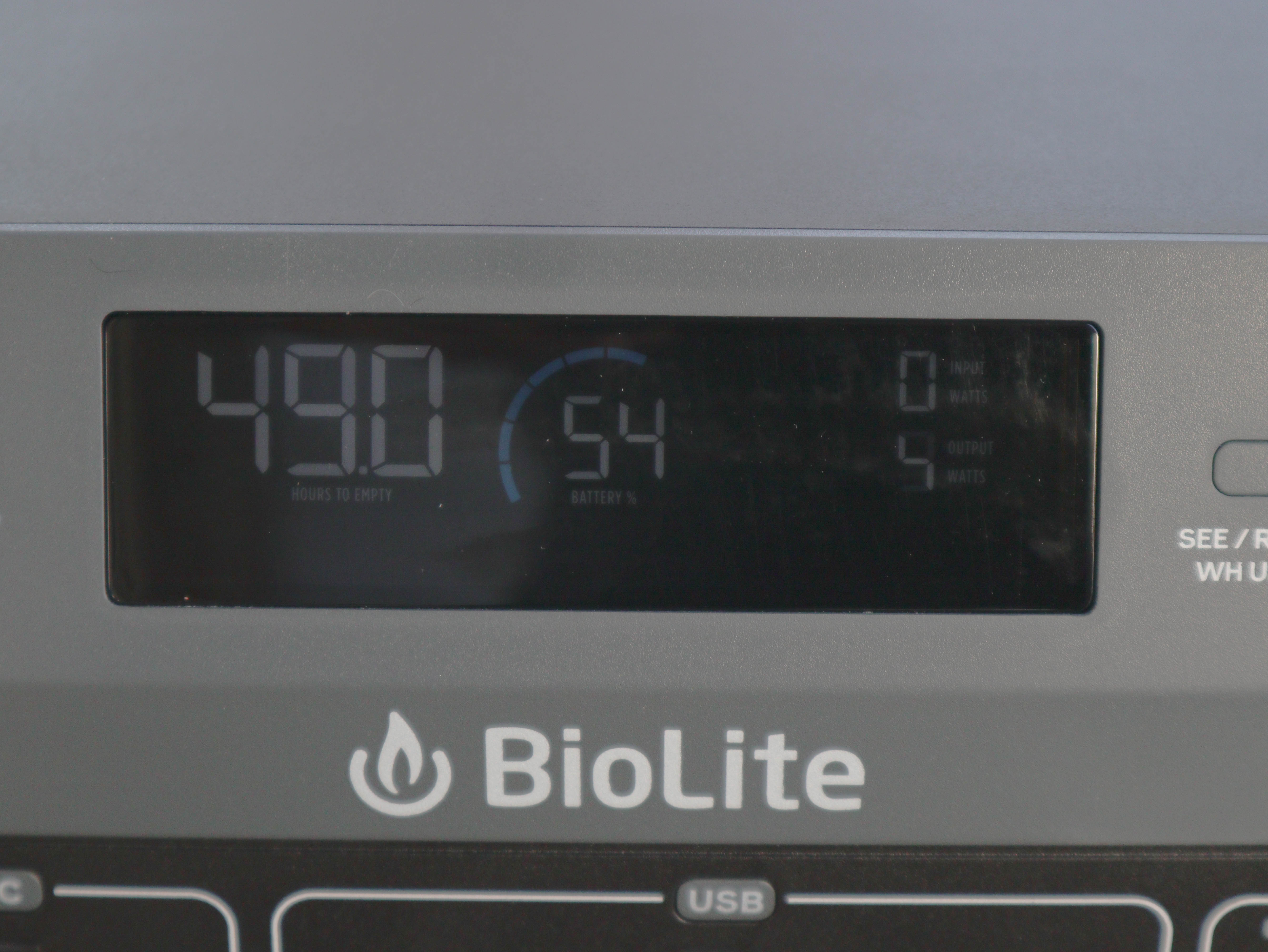
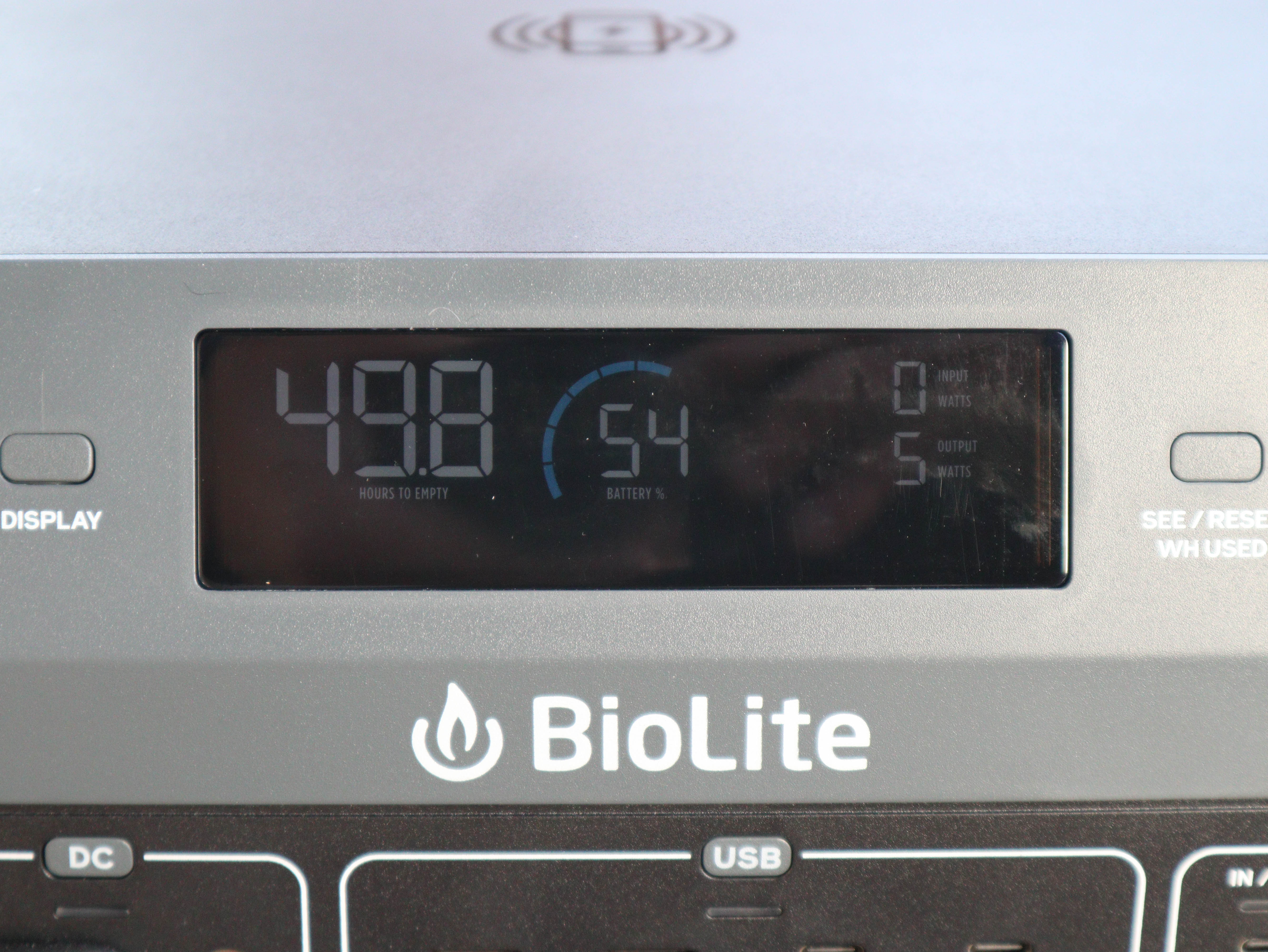

BIOLITE BASECHARGE 1500 PORTABLE POWER STATION REVIEW: SETUP & USE
The BaseCharge 1500 is a very simple power station: just hit the button to enable the output you want, plug the cable in, and it delivers the juice. The display automatically turns on when you enable an output, and you can turn the display off with the display button next to it.
The BaseCamp 1500 does get a little noisy when it is outputting a lot of power: when I plugged in any 110V device that drew more than a few watts, the fan inside the power station started up with a loud whirr that persisted for as long as the device was running. It is certainly less irritating than a generator, but it is a persistent noise that could be annoying in a quiet campground.
There is also no cable storage on the BaseCharge 1500 or any included cables. Other portable power stations include a few and offer a space to stash cables, plugs, and other things you will need, but the BaseCharge 1500 does not.
BIOLITE BASECHARGE 1500 PORTABLE POWER STATION REVIEW: PERFORMANCE
I found that the BaseCharge 1500 performed very well: all of the outputs worked as advertised, and none of the devices I tested it with had any issues with the power output. It charged laptops, phones, and other portable devices, and the AC output worked with heaters, small refrigerators, and power tools. The only problem was that the 110V power output is limited.
The BaseCharge 1500 does have limitations, though. The 1200 Watt continuous output power is significantly lower than other models: the GoalZero Yeti 1500X has a similar overall capacity but can output 3000 Watts at a time. The 1200 Watt output of the BaseCharge might sound like a lot, but it gets used quickly. When I plugged in a PS5, that took about 350 Watts and a small video projector took about TK watts. So, that’s more than half of the battery's output used to play a bit of Horizon: Forbidden West in the woods.
If you plan on using your portable power station as battery backup at home, you’ll face a similar problem: a standard domestic fridge will consume between 300 and 700 Watts, so you won’t be able to run more than one or two devices from this.
I also found a couple of quirks with the BaseCharge. Firstly, the device sometimes seemed to get confused about what was connected. On one occasion, when I turned on the AC ports, the device claimed they were overloaded and disabled them. Nothing was plugged in, though. The problem seemed to solve itself if I left the power station fo
When I connected a USB PD device like a laptop with a battery that was more fully charged than the BaseCharge, the devices swapped roles: the laptop charged the BaseCharge. That’s annoying if you are about to head home and want to use the last bit of juice in the BaseCamp to fully charge your laptop battery to use on the drive home, for instance. You can get around this by using the USB-C output instead, but it would be easy to use the PD connection and end up discharging your laptop if you were not paying attention.
I also found that just turning on the AC outputs caused a 10 Watt drain on the battery, so remember to turn off the AC outputs unless you are using them: if you left them on by mistake, this would run the battery down eventually.
Charging the BaseCharge 1500 can be done with either the included 130W wall adapter or with a USB Power Delivery (PD) compatible power adapter. Either way, it takes quite a long time to charge: my tests took 12 hours with the included 130 Watt charger and 16 hours with a 100 Watt USB PD charger.
BIOLITE BASECHARGE 1500 PORTABLE POWER STATION REVIEW: VERDICT
The BaseCharge 1500 is an interesting portable power station: it has plenty of capacity for the weight and a big selection of outputs to access that charge. It has a lower maximum output than other similar portable power stations, though, and there is nowhere to stash the cables you will need. But it’s a great pick if you are trying to keep the weight of your camping kit down and will mainly use it to charge phones, laptops, and cameras. If you like to take your AV setup with you when camping, however, you might want to look for something bigger with more output for 110V devices.
BIOLITE BASECHARGE 1500 PORTABLE POWER STATION REVIEW: ALSO CONSIDER
If you are looking for a decent amount of power in a fairly portable package, several options exist. The Goal Zero Yeto 1500X costs about the same and offers a similar amount of stored power as the BaseCharge 1500 but can output more of this at a time. It is much heavier, though. If you only need to charge a couple of devices like a camera and a cell phone, you might consider a smaller portable power station, like our top-rated Eco Flow River Max. That is much more portable than the BioLite BaseCharge 1500.
Sign up to the T3 newsletter for smarter living straight to your inbox
Get all the latest news, reviews, deals and buying guides on gorgeous tech, home and active products from the T3 experts
Richard Baguley has been writing about technology since the 1990s, when he left a promising career in high finance to work on Amiga Format magazine for Future. It has been downhill for him ever since, writing for publications such as PC World, Wired and Reviewed.com. He has tested gadgets as diverse as 3D printers to washing machines. For T3, he covers laptops, smartphones, and many other topics. He lives near Boston in the USA with his wife, one dog, and an indeterminate number of cats.
-
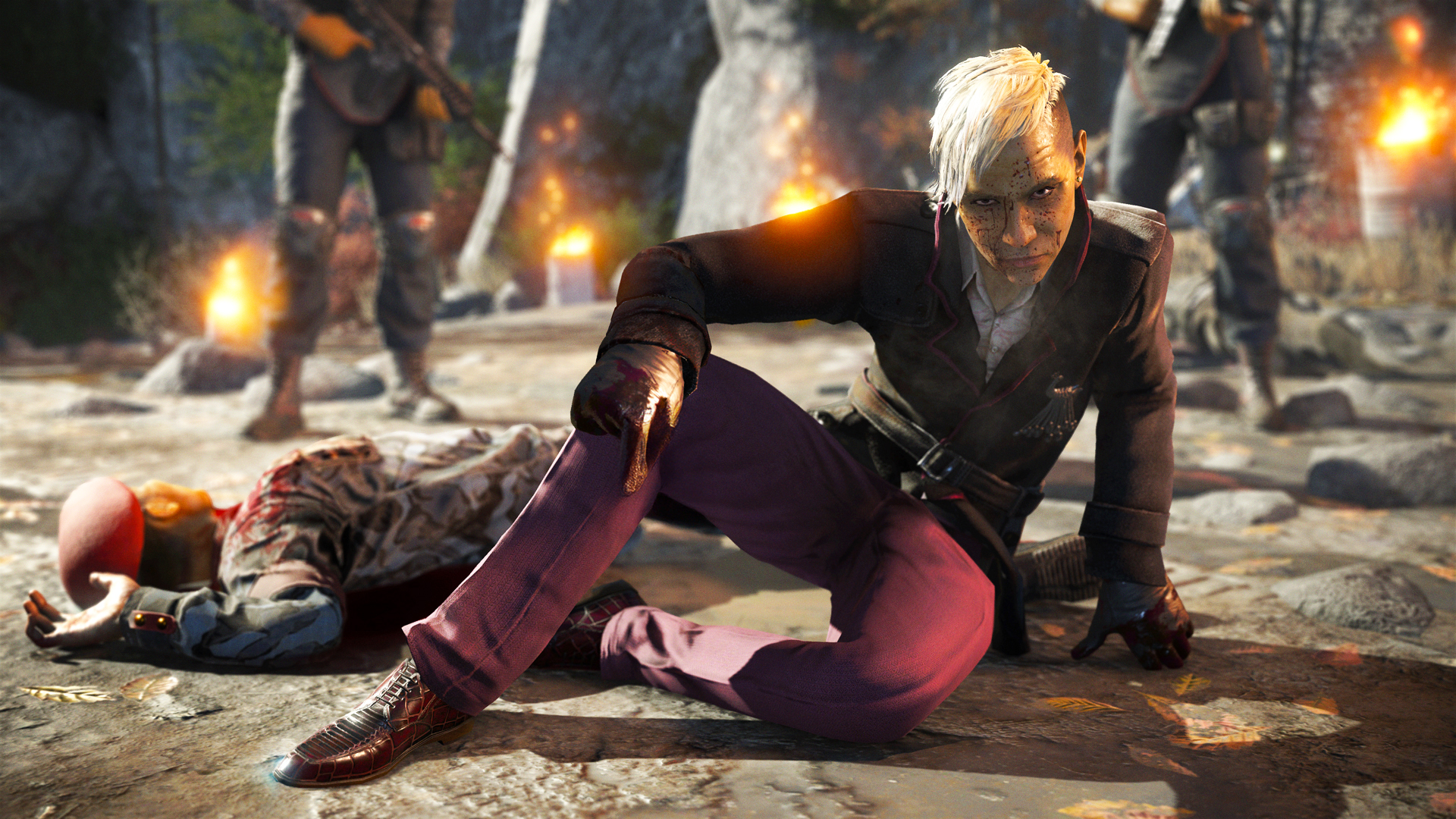 One of the best villains in gaming is coming to Xbox Game Pass for free
One of the best villains in gaming is coming to Xbox Game Pass for freeAll Game Pass subscribers are getting one of the best single-player shooters of the decade
By Rik Henderson Published
-
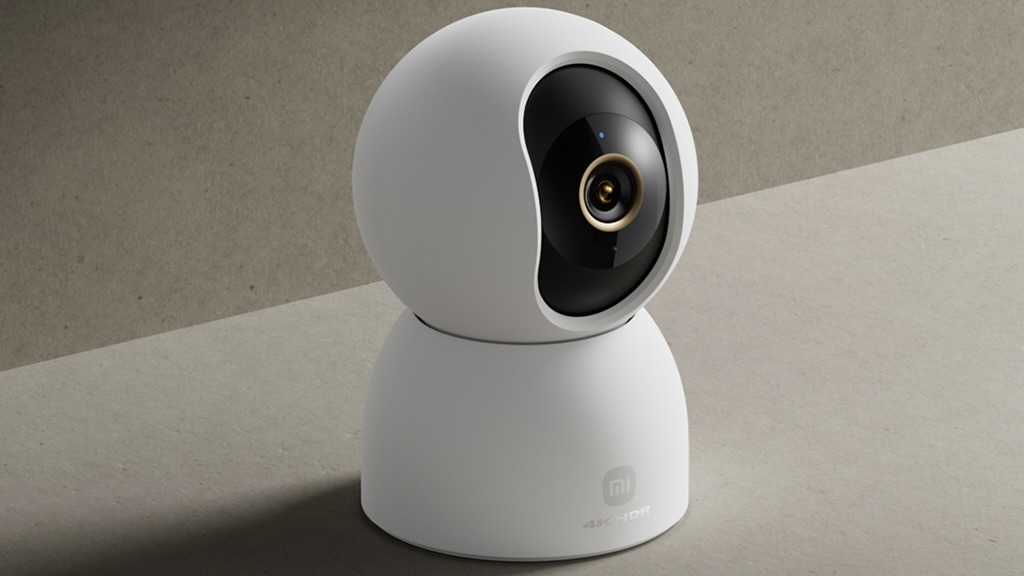 Xiaomi’s next indoor smart security camera could be its most affordable yet
Xiaomi’s next indoor smart security camera could be its most affordable yetIt's less than $40...
By Lizzie Wilmot Published
-
 Samsung hits pause on Android 15 rollout, but your phone might be lucky
Samsung hits pause on Android 15 rollout, but your phone might be luckyYour delayed Samsung One UI 7 software update could be delayed some more
By Chris Hall Published